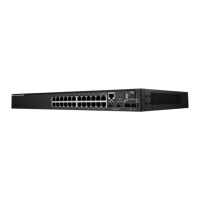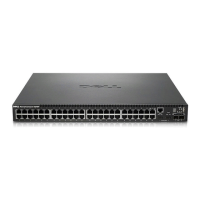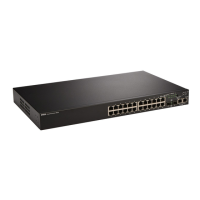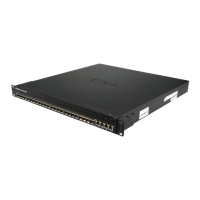418 Dell PowerConnect 55xx Systems User Guide
FILE LOCATION: C:\Users\gina\Desktop\Checkout_new\Maintenance Projects\Dell
Contax\CxUGSwitching_Ports.fm
DELL CONFIDENTIAL – PRELIMINARY 9/11/12 - FOR PROOF ONLY
Port Mirroring
Switches usually only forward frames to relevant ports. To monitor traffic,
either for information gathering, such as statistical analysis, or for
troubleshooting higher-layer protocol operation, the Mirroring feature
forwards frames to a monitoring port.
Mirroring provides the ability to specify that a desired destination (target)
port will receive a copy of all traffic passing through designated source ports.
The frames arriving at the destination port are copies of the frames passing
through the source port at ingress, prior to any switch action.
It is possible to specify several source ports to be monitored by a single target
port. However, in this case, the traffic sent to the target port is placed in the
target port's queues on a first come, first served basis, and any excess traffic is
silently discarded. This may mean that the traffic actually seen by any device
attached to the target port is an arbitrarily selected subset of the actual traffic
going through the source ports.
Port mirroring is only relevant to physical ports. Therefore, if you want a LAG
to function as the source of a port mirroring session, the member ports must
be individually specified as sources.
Up to four sources can be mirrored. This can be any combination of four
individual ports.
Before configuring Port Mirroring, note the following:
• Monitored ports cannot operate faster than the monitoring port.
• All Rx/Tx packets should be monitored to the same port.
Destination Port Restrictions
The following restrictions apply to destination ports:
•
Destination
ports cannot be configured as source ports.
•
Destination
ports cannot be a member of a LAG.
• IP interfaces cannot be configured on the
destination
port.
• GVRP cannot be enabled on the
destination
port.
•The
destination
port cannot be a member of a VLAN.
•Only one
destination
port can be defined.
